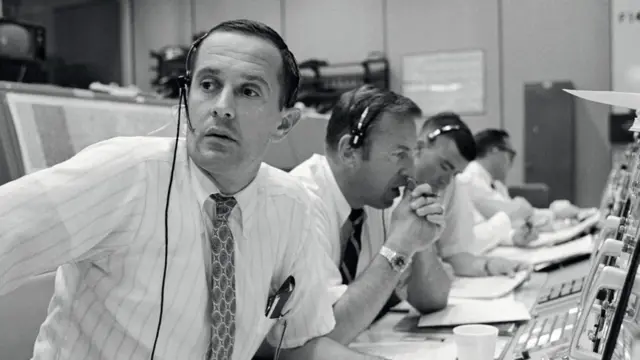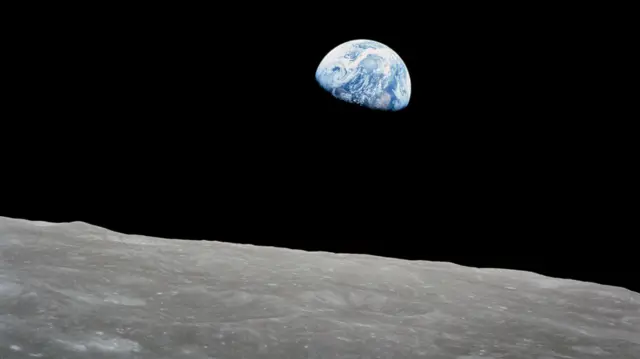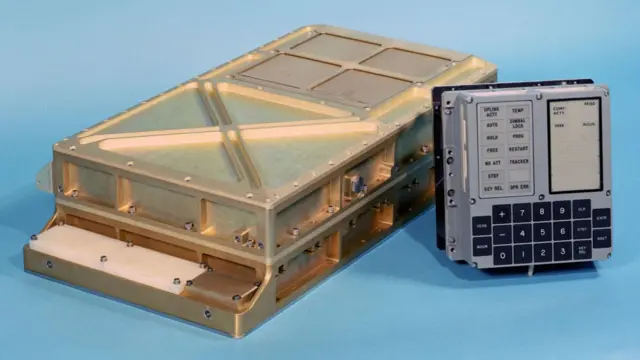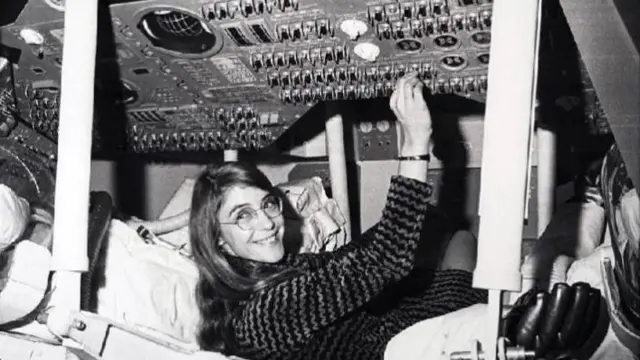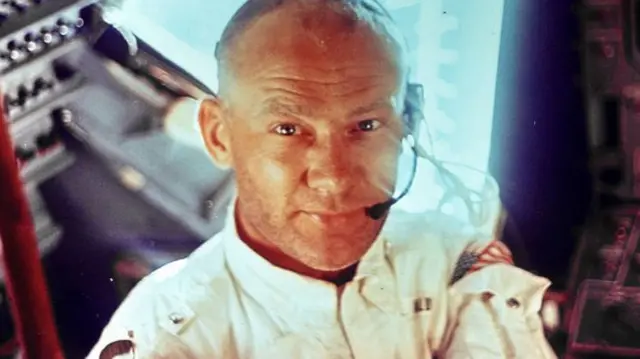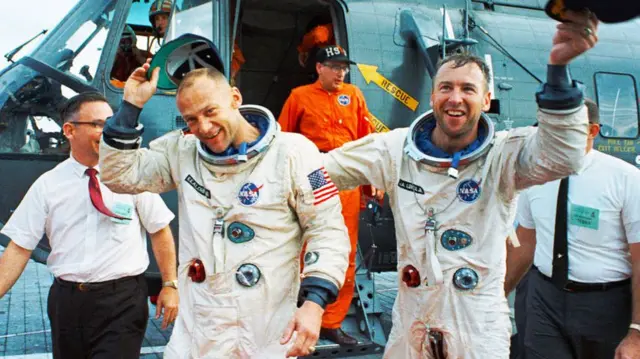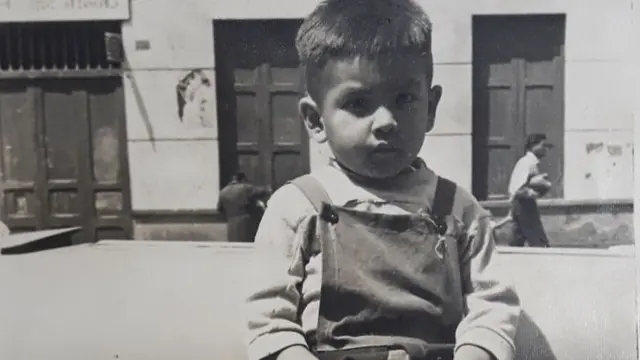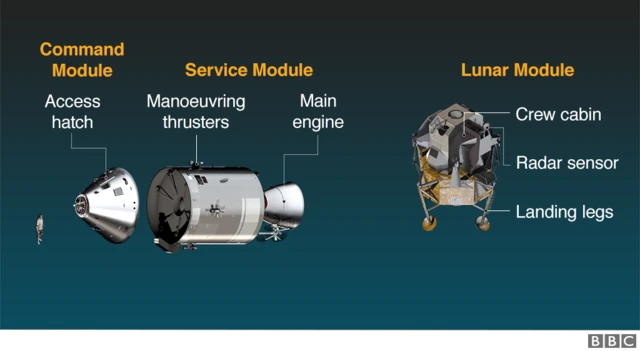Lunar landmarkspublished at 21:09 BST 20 July 2019
"Our position checks downrange show us to be a little long."
Neil Armstrong realises he'll miss the target landing site.
Before the launch, he wrote a checklist of lunar landmarks and has been timing their appearance from his view from the window.
